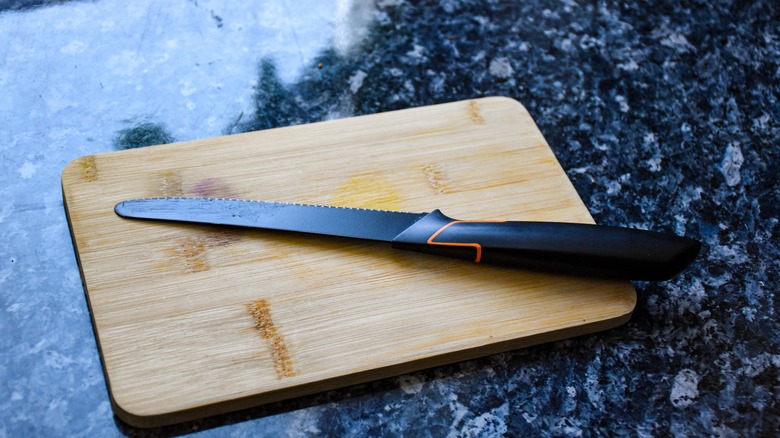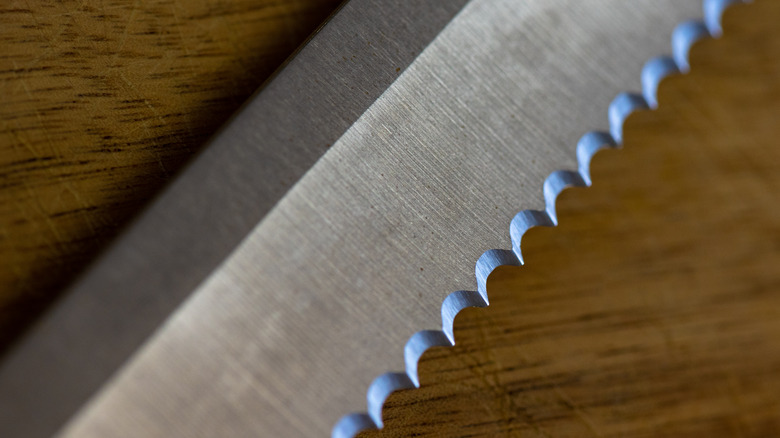How To Sharpen A Serrated Knife For The Cleanest Cut Every Time
There's nothing worse than a dull knife in the kitchen. Not only are they difficult to use, but they're also dangerous. It might seem counterintuitive that a dull knife is more dangerous than a sharp one, but far more accidents are caused by dull knives than sharp ones. Also, chopping accidents with dull knives also tend to be more serious, thanks to the extra force needed to chop with a dull knife. When it comes to sharpening serrated knives, you'll need an approach different from sharpening a dull kitchen knife with a standard flat blade. With their many grooves, serrated knives are a bit more challenging to sharpen, as you'll have to sharpen each groove rather than only the flat side of the blade. The best way to sharpen a serrated knife is with a sharpening rod, a thin, tapered tool that fits inside the grooves of your serrated knife.
While it can be rather painstaking to sharpen a serrated knife, the good news is that you won't need to do it very often. Since serrated knives typically don't have much contact with the cutting board when you use them, they don't go dull nearly as quickly as traditional flat blades. To keep your knives nice and sharp, you can take care of them by keeping them clean and dry and storing them on a magnetic knife strip under your kitchen cabinets or a dedicated wooden knife block. If your priority is to keep your knives clean, you might want to avoid using a wooden knife block.
Take your time when sharpening a serrated knife
Once your serrated knife starts leaving slices on your cutting boards or leaving more crumbs than usual, it's likely time to sharpen the blade. This might take a while, so give yourself time to do it right. When sharpening a serrated blade, you need to sharpen the proper side of the blade. If you look closely at your serrated knife, you'll notice that the blade is flat around the grooves on one side, and on the other side, the grooves are slightly indented. The indented side is known as the beveled side, and this is the side that needs to be sharpened.
To sharpen the beveled side of your knife, you'll want to hold the knife perpendicular to the sharpening rod, with the beveled side resting against the rod. Then, go ahead and slide the sharpening rod against each of the teeth of the knife with a back-and-forth motion while keeping the blade perpendicular to the rod at all times. You'll do this in each groove. Afterward, you'll likely have some build-up, or a burr, on the non-beveled side of the blade. You'll want to remove this to get the most out of your knife. To remove the burr, run the non-beveled side of the knife along the sharpening rod, just like how you would sharpen a traditional flat blade. Once the burr is removed and the grooves are sharp once again, you can get back to cleanly slicing bread with your freshly sharpened knife.

